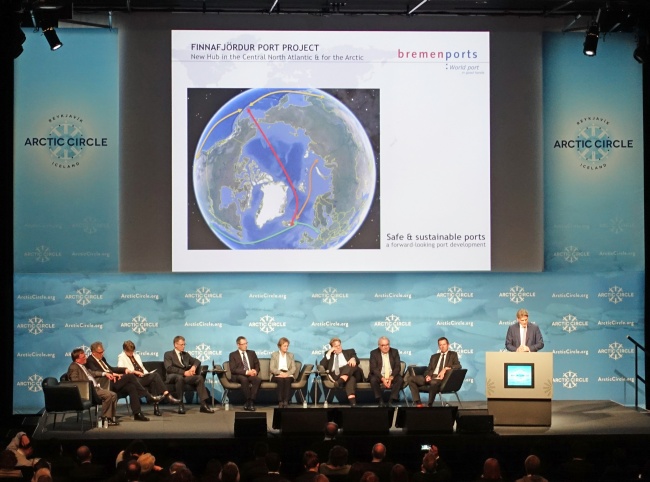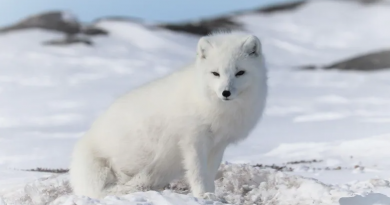Germany, Iceland cooperate on new transpolar port

The German company Bremenports has concluded an agreement with Icelandic authorities and the Icelandic engineering company Elfa on a feasibility study of a large, deep-water harbour to facilitate international Arctic shipping and petroleum activity.
The harbour is planned to be located in Finnafjörður on the North-eastern point of Iceland.
Preparations for construction have started, Robert Howe, Managing Director of Bremenports said at the Arctic Circle 2015 assembly in Reykjavik on Friday.
“Safe and sustainable shipping in the Arctic needs concrete projects, this is one of them,” Howe said.
Energy and Arctic shipping
Bremenports is investing ISK 450 million (€2.2 million) in the preparations, websiteIslandsbloggen writes.
The port will have three main purposes: a base port for oil and gas operations in the Arctic, a hub port for trans-Arctic shipping, and a service port for both offshore petroleum activity and Arctic shipping. The plans for the port include LNG bunkering facilities and a search and rescue base.
The first weather stations were put up in the planned area for the harbour in August 2015. Further research and planning will take place in 2016-2017. This part of the preparations include studies of wave regime, sea floor conditions, sedimentation and erosion, as well as examination of the flora and fauna and documentation of archeologically relevant objects in the area.
“This fjord is very suitable for safe shipping infrastructure in the Arctic”, Howe said. The North-eastern shores of Iceland are ideal for a port for shipping along the Transpolar Sea Route, a future Arctic shipping lane running from the Atlantic Ocean to the Pacific Ocean across the center of the Arctic Ocean. Due to the increasing decline of Arctic sea ice extent, the route is slated to emerge as the predominant Arctic shipping route by 2030.
Ice-free, safe hubs needed
In contrast to the Northern Sea Route and North-West Passage, the Transpolar Sea Route largely avoids the territorial waters of Arctic states and lies in international high seas.
New ice-free and safe hubs are needed at both ends of this route. They could be located in Alaska and Iceland, the developers believe.
Related stories from around the North:
Asia: Asia ahead on preparing for polar climate change, says U.S. Arctic rep, Eye on the Arctic
Canada: Ice, shipping and the Northwest Passage, Radio Canada International
China: Chinese company mulls more Arctic shipping, Barents Observer
Iceland: International community talks Arctic in Iceland, Barents Observer
Russia: New law would allow only Russian-flagged ships in Russian Arctic, Barents Observer
Sweden: Swedish icebreakers gear up for Arctic role, Radio Sweden
United States: Arctic no shipping rival to Suez: expert, Alaska Public Radio Network



